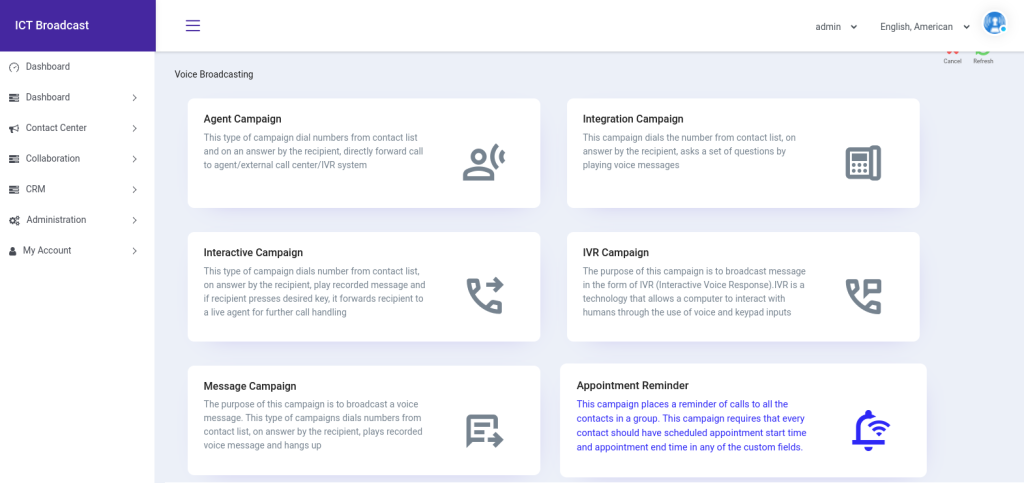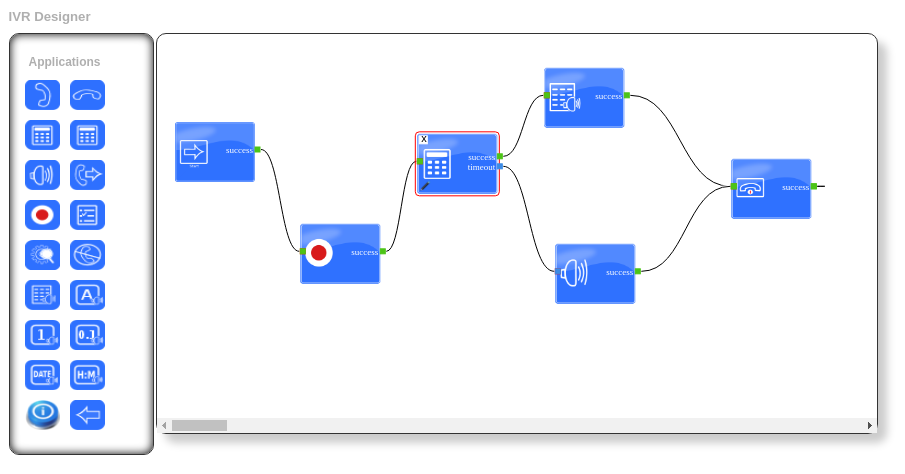In today’s fast-paced business environment, customer engagement has become a critical factor for success. Organizations are increasingly turning to advanced multi-tenant contact center software and open source unified communication solutions to optimize their customer service operations, improve communication efficiency, and enhance the overall customer experience. These platforms enable multiple clients or tenants to share a single instance of the software while keeping their data isolated and secure. This article explores the core features of advanced multi-tenant contact center platforms, shedding light on how they can transform customer interactions and drive business growth.
What Are Multi-Tenant Contact Center Software?
Multi-tenant contact center software is a cloud-based solution that allows multiple businesses or clients to use a single software instance while keeping their data and configurations separate. This architecture provides organizations with the benefits of a shared environment while ensuring privacy and security. Each tenant operates independently, enabling them to customize their user experience and service offerings without impacting others.
Key Characteristics:
- Shared Infrastructure: Resources such as servers, databases, and applications are shared among multiple clients, reducing costs and complexity.
- Data Isolation: Each tenant’s data is stored separately, ensuring confidentiality and security.
- Flexible Customization: Tenants can customize their settings and features based on their unique needs and preferences.
Why Do Businesses Need Multi-Tenancy in Their Contact Center Software?
Adopting multi-tenant contact center software offers several advantages that make it an attractive option for businesses of all sizes. Understanding these benefits can help organizations make informed decisions about their customer service infrastructure.
Key Benefits:
- Cost Efficiency: By sharing resources, businesses can significantly reduce costs associated with hardware, maintenance, and software licensing.
- Scalability: Multi-tenant systems are designed to scale easily, allowing businesses to add new users and features as needed without extensive investment.
- Faster Deployment: With a shared environment, businesses can implement solutions more quickly, enabling them to respond to market demands faster.
- Simplified Management: Centralized management tools streamline administrative tasks, making it easier to oversee multiple clients or departments.
- Continuous Updates: Multi-tenant platforms often receive automatic updates, ensuring all tenants benefit from the latest features and security improvements.
Core Feature of Multi-Tenant Contact Center Software:
Scalability and Flexibility
One of the primary advantages of advanced multi-tenant contact center platforms is their scalability. As businesses grow, their customer service needs evolve. Multi-tenant systems are designed to scale effortlessly, allowing organizations to add new users, features, and services without significant investments in infrastructure.
Benefits of Scalability:
- Cost-Effectiveness: Businesses can expand their operations without incurring heavy costs associated with additional hardware or software.
- Adaptability: Multi-tenant platforms can adapt to changing customer demands, enabling businesses to quickly implement new features or services.
- Resource Optimization: By sharing resources across multiple tenants, organizations can maximize efficiency and minimize waste.
Centralized Management and Monitoring
Advanced multi-tenant contact center platforms provide centralized management and monitoring capabilities. Administrators can oversee multiple clients or departments from a single interface, streamlining operations and improving efficiency.
Key Features:
- Unified Dashboard: A comprehensive dashboard allows managers to monitor real-time performance metrics across all tenants, such as call volumes, response times, and agent productivity.

- Role-Based Access Control: Administrators can assign different access levels to users based on their roles, ensuring data security and compliance with regulations.
- Custom Reporting Tools: Multi-tenant platforms often come with advanced reporting tools that enable businesses to analyze data specific to each tenant, facilitating data-driven decision-making.
Advanced Routing and Distribution
Effective call routing is essential for optimizing customer interactions and ensuring that calls are directed to the most qualified agents. Advanced multi-tenant contact center platforms offer sophisticated routing and distribution features that enhance customer service.
Routing Techniques:
- Skills-Based Routing: Calls are routed to agents based on their skills, ensuring that customers receive assistance from the most qualified representatives.
- Intelligent Call Distribution (ICD): This feature automatically distributes incoming calls among available agents based on predefined criteria, such as availability, workload, and expertise.
- Multi-Channel Routing: Advanced platforms support multiple communication channels, including voice, email, chat, and social media, allowing customers to reach out through their preferred medium.

Integrated Communication Channels
Today’s customers expect seamless communication across various channels. Advanced multi-tenant contact center platforms integrate multiple communication channels into a unified system, enhancing the customer experience.
Integrated Channels:
- Voice Calls: Traditional phone calls remain a crucial aspect of customer service. Multi-tenant platforms support VoIP technology for cost-effective and high-quality voice communications.
- Email and Chat: Integration of email and live chat functionalities allows agents to manage multiple customer interactions simultaneously, improving response times and satisfaction.
- Social Media Integration: Advanced platforms enable businesses to engage with customers on popular social media platforms, enhancing brand visibility and customer loyalty.
Self-Service Capabilities
Empowering customers with self-service options can significantly enhance their experience and reduce the workload on agents. Advanced multi-tenant contact center platforms often include self-service features that enable customers to find solutions to their queries independently.
Self-Service Features:
- Interactive Voice Response (IVR): IVR systems guide customers through automated menus, allowing them to resolve common issues without speaking to an agent.

- Knowledge Base Access: Customers can access a centralized knowledge base containing FAQs, articles, and guides, enabling them to troubleshoot issues on their own.
- Chatbots: AI-driven chatbots can handle routine inquiries, providing instant responses and freeing up agents for more complex tasks.
Robust Analytics and Reporting
Data-driven decision-making is crucial for optimizing customer service operations. Advanced multi-tenant contact center platforms come equipped with robust analytics and reporting features that provide valuable insights into performance metrics.
Analytical Capabilities:
- Real-Time Analytics: Managers can access real-time data on call volumes, agent performance, and customer interactions, enabling them to make informed decisions quickly.
- Customizable Reports: Users can create customized reports based on specific KPIs, such as customer satisfaction scores, average handling time, and first call resolution rates.
- Trend Analysis: Advanced platforms allow businesses to analyze historical data to identify trends and make proactive adjustments to improve service quality.
Enhanced Security and Compliance
With the increasing emphasis on data security and privacy, advanced multi-tenant contact center platforms prioritize robust security measures to protect sensitive customer information.
Security Features:
- Data Isolation: Multi-tenant systems ensure that each tenant’s data is stored separately, minimizing the risk of unauthorized access.
- Encryption: Data encryption protects customer information both in transit and at rest, ensuring compliance with regulations such as GDPR and HIPAA.
- Regular Audits and Monitoring: Advanced platforms conduct regular security audits and continuous monitoring to identify and address potential vulnerabilities proactively.
User-Friendly Interface
A user-friendly interface is essential for ensuring that agents can navigate the platform efficiently. Advanced multi-tenant contact center platforms often feature intuitive designs that enhance user experience.
UI/UX Features:
- Customizable Dashboards: Agents can personalize their dashboards to prioritize the information that matters most to them, improving workflow efficiency.
- Drag-and-Drop Functionality: Many platforms offer drag-and-drop features for configuring workflows and routing rules, making it easier for administrators to manage the system.
Omni-Channel Support
Customers today engage with businesses through various channels, including voice, email, chat, and social media. Advanced multi-tenant contact center platforms provide omni-channel support, enabling agents to deliver consistent service across all touchpoints.
Benefits of Omni-Channel Support:
- Unified Customer View: Agents have access to a single customer profile that consolidates interactions across channels, enabling personalized service.
- Consistent Messaging: Businesses can ensure that customers receive consistent messaging and support, regardless of the channel used.
- Seamless Transition: Customers can switch between channels without losing context, enhancing the overall customer experience.
Collaboration Tools
Effective collaboration among agents and departments is essential for delivering exceptional customer service. Advanced multi-tenant contact center platforms often include collaboration tools that facilitate communication and teamwork.
Collaboration Features:
- Internal Chat and Messaging: Agents can communicate in real time through internal chat systems, allowing them to seek assistance or share information quickly.
- Shared Workspaces: Multi-tenant platforms may offer shared workspaces for teams to collaborate on projects, training, and knowledge sharing.
- Integration with Third-Party Tools: Advanced platforms often integrate with popular collaboration tools like Slack, Microsoft Teams, or Google Workspace, enhancing communication across the organization.
Conclusion:
Advanced multi-tenant contact center platforms offer a comprehensive suite of features designed to optimize customer service operations, improve communication efficiency, and enhance the overall customer experience. With capabilities such as scalability, centralized management, advanced routing, integrated communication channels, self-service options, robust analytics, enhanced security, user-friendly interfaces, omni-channel support, and collaboration tools, these platforms empower organizations to meet the evolving demands of their customers.
As businesses continue to adapt to the ever-changing landscape of customer engagement, investing in advanced multi-tenant contact center solutions will be crucial for maintaining competitive advantage and delivering exceptional service. By leveraging these core features, organizations can not only enhance customer satisfaction but also drive long-term business growth and success.
Leveraging Open Source in ICT


